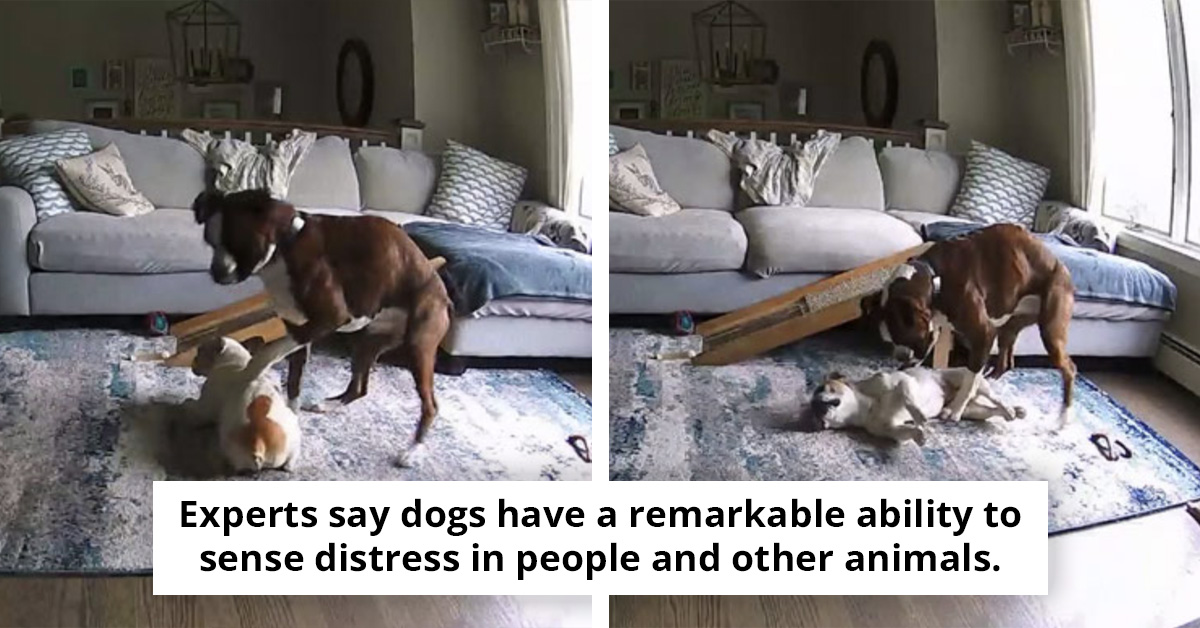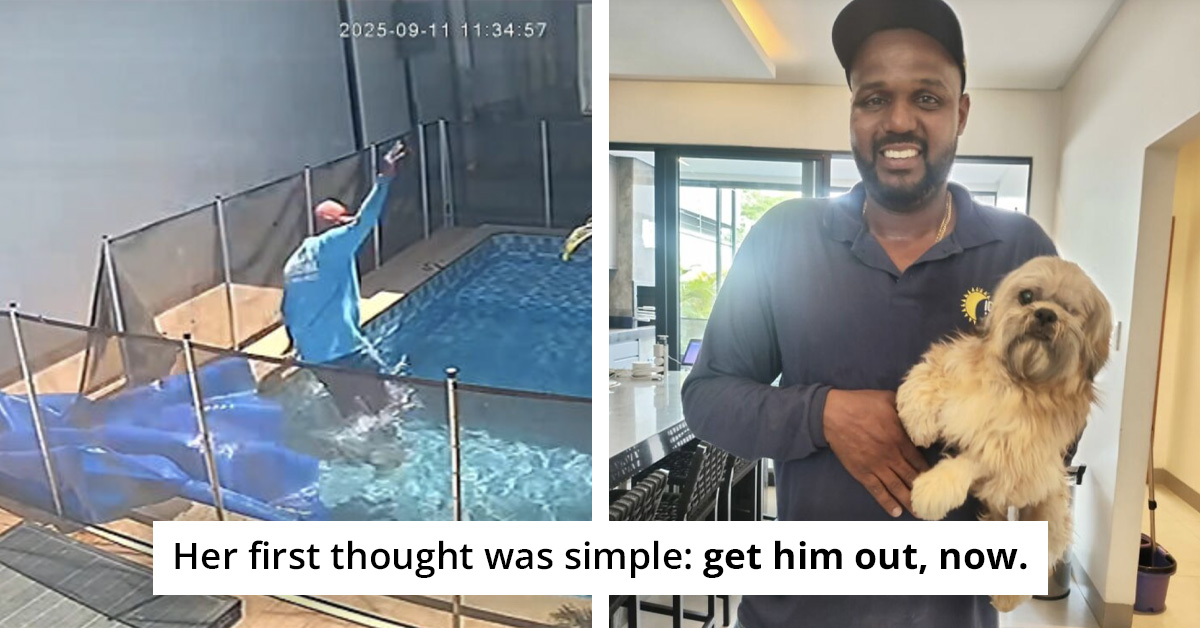Neighbor Dispute Ensues After One Kid Kept Kicking His Toys Over The Fence Which Hit The Homeowner's Sleeping Dog
One of the joys of owning your home is finally having your own space to do as you please. Not thoughtlessly, of course, because you still have to be a considerate neighbor.
Otherwise, it will be the beginning of a tense relationship between you and the people next door. You don't need me to tell you that this is not an ideal situation.
This homeowner was at their wit's end with the neighbor's son. It may sound odd to have a dispute with a 7-year-old, but that's exactly what happened to OP.
The kid enjoys kicking and throwing his toys over to OP's yard. The final event that solidified OP's feelings toward the neighbor's kid involved their 6-month-old puppy and a ball.
OP's adorable little puppy was lazily sunbathing in their yard when a ball suddenly came flying in and hit her. Now, the poor dog is too nervous to go into her own yard because of what happened.
Even the sound of a ball hitting the fence makes her anxious. OP spoke to the kid's dad about what happened.
OP said it wasn't fair that their dog could no longer enjoy her own yard because of the kid's actions. OP asked if the dad could talk to his son and tell him to stop using OP's fence as a bouncing board.
There is a nearby playing field where the kid could play, but he refuses to do so. It has been four weeks, but nothing has changed, and OP just found four balls in their yard, which they don't plan on returning.
OP's full post can be read below:


FOUR footballs??

Understanding Childhood Behavior
Childhood behavior often reflects a complex interplay between environmental factors and developmental stages. According to developmental psychology, children at the age of seven are typically in the 'concrete operational stage' as defined by Jean Piaget. This means they start to understand the concept of rules and boundaries, yet they may not fully grasp the consequences of their actions on others' feelings or property. Research shows that children are still learning social norms, and their understanding of personal responsibility evolves significantly during this period.
For instance, a study published in the journal Child Development revealed that children who are taught about empathy and the impact of their actions on others tend to develop better social skills and moral reasoning. This suggests that the child in this scenario may not fully understand the implications of kicking toys over the fence, highlighting an opportunity for parents to engage in discussions about empathy and respect for others' space.
The toys are from the neighbor kid for sure, but is he also to blame for the balls given that there's a field nearby?

Again, the stray balls are all from the neighbor kid because OP saw where they came from.

Their garden is also far enough that stray balls from the field are unlikely. OP wouldn't have had much issue with the neighbor's kid if the dog hadn't been affected by it.

Conflict between neighbors can often be traced back to differing expectations and communication styles. According to research by Dr. John Gottman, a leading figure in relationship psychology, effective communication is crucial to resolving conflicts. His studies emphasize the importance of expressing feelings and needs directly, rather than allowing misunderstandings to fester. When individuals fail to communicate their concerns clearly, as seen in this situation, it can lead to resentment and escalation of disputes.
Gottman’s research supports the idea that initiating a calm, face-to-face conversation about the issue could be beneficial. This approach could help clarify the homeowner's feelings while also encouraging the child's parents to understand the consequences of their child's actions. By framing the discussion around the homeowner’s feelings rather than blaming the child, the conversation is more likely to result in a constructive outcome.
Suffer might be too much for this situation; inconvenienced maybe.

OP did what they thought was best because giving the kid's toys and balls back has become too much of a chore. Their dog also couldn't enjoy their garden any longer because of it.

Is there anything else OP can do to prevent their dog from getting hit again?

The Role of Parenting Styles
Parenting styles can significantly influence children's behavior and social interactions. Research conducted by developmental psychologists, including Dr. Diana Baumrind, identifies four primary parenting styles: authoritative, authoritarian, permissive, and neglectful. In this case, the parents' refusal to address their child's behavior may reflect a permissive parenting style, characterized by a high level of responsiveness but low demands.
Studies indicate that children raised in permissive environments may struggle with understanding limits and social responsibilities, which could explain the child’s actions in this dispute. To mitigate this, parents can adopt more authoritative strategies that combine warmth with clear expectations. By setting boundaries and encouraging accountability, parents can help their children develop a better understanding of their actions and how they affect others.
OP's fence is already six feet tall. Building a taller wall would be an expensive job, and if the kid is deliberately throwing his things, a tall fence wouldn't work.

OP can make lemonade out of these many inflatable lemons.

Oof, let's not give the neighbor's kid more ideas, shall we?

Emotional regulation is a crucial skill that often develops during childhood, influencing how individuals respond to conflicts. Research indicates that children who learn to manage their emotions effectively are better equipped to navigate social situations and resolve disputes. Dr. Mark Brackett, director of the Yale Center for Emotional Intelligence, emphasizes the importance of teaching children to recognize and label their emotions, which can lead to healthier interactions with peers and adults.
In practical terms, the homeowner might consider sharing resources or strategies with the child's parents that focus on emotional intelligence. For example, recommending books or programs that teach children about feelings and conflict resolution could foster a more empathetic environment, helping the child learn to navigate their impulses and consider the impact of their actions on others.
OP can do this while looking the kid and his parents in the eye. That would definitely send a message.

Apparently, this hasn't happened before, and the person in OP's position was judged harshly.

Chalking up bad behavior to kids being kids is a lame excuse. You don't let kids do what they want regardless of consequences. You have to teach them what they can and can't do.

Neighborhood Dynamics and Social Psychology
The dynamics of neighborly relationships can significantly affect community well-being and individual mental health. According to Dr. Shawn Achor, a positive psychology researcher, "When we foster strong relationships with our neighbors, we create a sense of belonging that enhances our overall happiness." Conflicts, such as the one described, can lead to isolation and increased stress for all parties involved. Dr. Pat Love, a relationship therapist, emphasizes that "open communication and mutual respect are essential in resolving conflicts and building a supportive community." Initiatives such as neighborhood meetings or informal gatherings can create opportunities for neighbors to connect, share concerns, and collaboratively find solutions to shared issues.
We LOVE this idea, and we are hoping that OP saw it.

We have to assume that the kid is not an a**hole, but his parents should definitely provide guidance here. There are much better ways to communicate that he wants to play with the dog.

OP can tape this note on the toy shrine to really send the message.

Conflict resolution is an essential skill that can be improved through practice and education. A study published in the Journal of Conflict Resolution demonstrates that individuals who engage in conflict resolution training show marked improvements in their ability to manage disputes effectively. The skills acquired through such training include active listening, empathy, and negotiation strategies.
For the homeowner facing this issue, exploring conflict resolution workshops or resources could empower them to approach the situation with a constructive mindset. Additionally, involving a neutral third party, such as a community mediator, may facilitate a more productive dialogue between the homeowner and the child's parents, ultimately leading to a healthier resolution.
It didn't have to end up this way, but since the parents refuse to do anything, OP had to do what they could. Exactly how many balls does this kid have?
Maybe OP's actions will force the kid's parents to teach him how to be considerate. OP's dog will finally be able to sleep in the yard again.
Psychological Analysis
This situation highlights how a child's behavior can often reflect their developmental stage and the parenting style they're exposed to. The boy's actions—kicking toys over the fence—might stem from a lack of understanding about boundaries and empathy, which are crucial skills typically nurtured in supportive environments. If his parents maintain a permissive style, he may not grasp the consequences of his actions on others, making this an important teaching moment for both him and his family.
Analysis generated by AI
Moving Forward: Actionable Steps
Research underscores that interpersonal conflicts, such as neighbor disputes, often stem from a lack of communication and differing expectations. By employing strategies grounded in psychological principles, such as emotional intelligence and effective conflict resolution, individuals can navigate these challenges more successfully. According to Dr. Daniel Goleman, an emotional intelligence expert, "The ability to communicate effectively and empathize with others is crucial in resolving conflicts." Fostering open dialogue and understanding can lead to healthier relationships and improved community dynamics. Ultimately, the goal is to transform conflicts into opportunities for growth and connection, benefiting not just the individuals involved, but the broader community as well.



